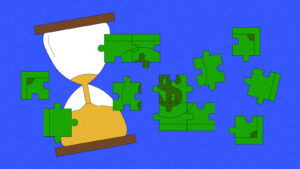An Australian-led project to grow plants on the moon has secured a ride on a lunar mission scheduled for 2025.
Plants and seeds encased in a carefully designed capsule will make the 380,000 km journey aboard an Intuitive Machines lunar lander.
The mission – the Australian Lunar Experiment Promoting Horticulture (Aleph) – is one of the first Australian-led lunar missions and is led by the startup Lunaria One, in collaboration with research institutions, non-profit organizations and industry partners.
Lunaria One director Lauren Fell said that while producing something “alive, fresh and green” for astronauts to eat on the moon – and then Mars – was one of the mission’s ultimate goals, the first test was whether the plants could survive. They will have to endure prolonged storage at the launch pad, intense vibrations during lift-off and the unique lunar conditions, including temperatures ranging from 120ohC to 130ohC below zero.
“We’re not growing a full garden yet,” she said.
“As we look at a more sustainable human presence on the moon, and then Mars, we need to develop ways to send things there that can grow.”
Dr Caitlin Byrt, a bioengineering professor and plant scientist at the Australian National University, advised Aleph on plants that could withstand the journey.
“We need to understand how plant life, or photosynthetic life in general, can be resilient enough to go through this journey of extremes, to be in this stasis, and then actually be able to grow again,” she said.
Resurrection plants have already adapted to desert environments, including extremely dry, hot and cold conditions, she said. On Earth, they could dry down to 10% of their ideal water content, go on “pause” for a long period of time, and grow again when water was available.
Innovation for space had the potential to reap broader benefits, such as learning how to propagate fresh and nutritious food after a disaster or extreme climate event, Byrt said.
“If we can design something that can survive a trip to the moon, then we can design something that can survive some of the most extreme challenges we face on Earth,” she said.
In 2024, Intuitive Machines became the first private company to successfully land a spacecraft on the lunar surface. Lunaria One’s payload was to travel on the company’s third lunar mission.
Aleph was backed by a $3.6 million grant from the Australian Space Agency.
Enrico Palermo, head of the agency, said: “Understanding which plants to grow in space – and how best to grow them – will play a key role in human space exploration in the coming years, as we give important scientific lessons to apply back to Earth.”
Fell said public participation in the Australian-led mission was a priority.
“We have lots of different activities, engineering challenges, other plant-based experiments that people can try in their home and contribute to science.”





